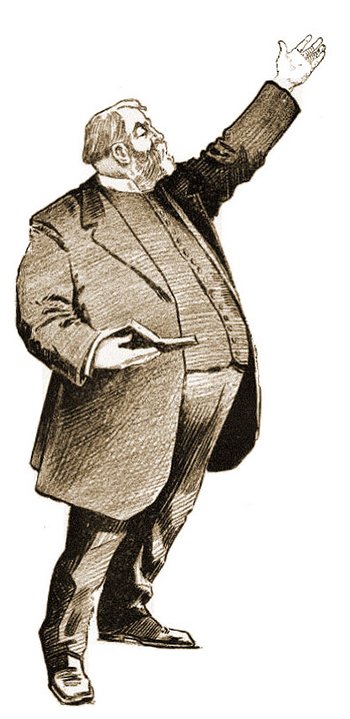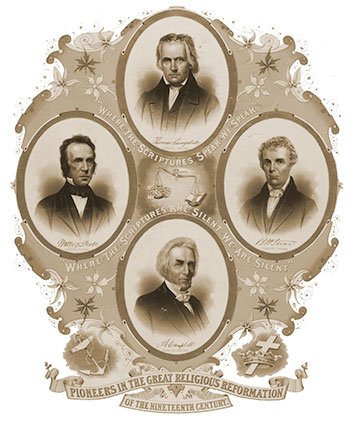Thomas Wyatt – 1891 -1964

Thomas Wyatt
Thomas Wyatt may well be regarded as the unsung hero of the healing movement as he remains to this day, one of the least known and least documented healing evangelists. His ministry pre-dated the Healing Revival and the Latter Rain Movement by almost 20 years. He practiced a powerful healing ministry across the US and became a major exponent of Latter Rain teachings.
Thomas Wyatt’s early years
Raised in hardship and deprivation in Jasper County, Wyatt left school at age 11 when his father became a semi-invalid. After his conversion in the Methodist church at Ira, Iowa, he had a near-death experience. While in an 18-hour coma, he heard the words, “I am the Lord that healeth thee.” After his recovery he began a Midwestern healing ministry that even attracted the attention of Look magazine (Nov. 23, 1937).
He had pastored several small Methodist churches in the 1930s before receiving a powerful baptism of the Holy Spirit which launched him into another sphere of ministry. During the American ‘depression’ he boldly ventured into pioneer evangelism, traversing the Midwest, holding healing revivals.
Local church ministry
It was a tough time; gathering crowds was hard and finances were lean but after a successful revival in Portland, Oregon, Wyatt established the Wings of Healing Temple and devoted himself to local church ministry. The work was slow until 1942 when he began his successful Wings of Healing broadcast. He was undoubtedly the pioneer of American radio healing ministries and became the primary model for successive radio ministries during the following decades.
In 1945, he began a monthly paper, the March of Faith, which gave his ministry a much wider reach. The Portland ministry continued to expand, and in 1946/47 he opened the Bethesda Bible Institute.
The Healing Revival
In 1948 Wyatt predicted the coming of a great revival, which was in full swing within 12 months. William Branham enjoyed a meteoric rise to fame through his tent crusades and well-attested healing ministry. Wyatt helped at the beginning of Branham’s tour of the West Coast.
His vast network of Radio and Monthly newsletters helped advertise the healing revival, though Wyatt was a not a mainline participant. He conducted campaigns for evangelism and healing but he was far more traditional and accessible to the churches than the ministry on the ‘sawdust trail’ and the scores of young and vibrant healing ministries employing tent crusades.
The Radio Ministry
The radio ministry got off to a slow start, but in 1952 Wyatt asked his local supporters to raise $10,000 to sponsor his program on the ABC radio network. A year later he added the Mutual network. In 1954, Wyatt proudly announced:
“Millions of listeners are finding new hope and living faith through the inspired ministry of Wings of Healing, heard every Sunday on more than five hundred stations. We have received hundreds of thousands of testimonies from folks whom God has healed through Wings of Healing. Thousands of heathens throughout the world have been saved and healed in the past year through the ministry of faith. Multitudes have been filled with the spirit and impowered with supernatural service.”
The Latter Rain Movement
On February 12, 1948, an outpouring of the Holy Spirit occurred at a Pentecostal school in North Battleford, Saskatchewan, Canada. It bore certain similarities to the early Pentecostal movement that originated at Azusa Street, Los Angeles, in 1906. Although on a much smaller scale than that Pentecostal Revival, its effects were felt worldwide, and it became one of the main catalysts of the charismatic movement of the 1960s and 1970s, as well as the new apostolic ministries that appeared in the late 20th and early 21st centuries..
Various manifestations of the Spirit occurred during the revival, like gifts of the Holy Spirit, reception of the Holy Spirit through the laying on of hands, tongues, prophecy, healing etc. Soon revelations of the word of God were given concerning the ministries of Ephesians 4:11-2: Apostles, Prophets, Evangelists, Pastor and Teachers. Spontaneous worship and congregational participation was practiced.
The participants and leaders soon realised this was the birth of a new way of way of ‘doing church.’ Restoration became their message – ‘let’s return to the pattern of the New Testament Church’ was their cry.
News of this revival spread like wildfire, giving old Pentecostals fresh hope and non-Pentecostals a vision of a restored New Testament Christianity.
On February 24 1949, Thomas Wyatt invited the most notable leader of the Latter Rain Revival, George Hawtin, and others to speak at a convention at the Wings of Healing Temple in Portland, Oregon. The meetings went on for three weeks! About 90 ministers were among the congregants. The revival was broadcast over Wyatt’s radio program that was aired on 64 stations.
Wyatt was overwhelmed with these new doctrines and immediately embraced them, becoming one of their main proponents. He was not alone. Many Pentecostal leaders accepted the “latter rain” revival, including Mrs. Myrtle Beall of Detroit; Ivan Spencer of the Elim Bible Institute in New York; Fred Poole of Philadelphia; Stanley Frodsham, long-time editor of the Assemblies of God paper, the Pentecostal Evangel; and Cecil Cousen, a pastor of the Apostolic Church in Hamilton, Ontario and son of one of the founding members of the Apostolic Church.
Hundreds of new Latter Rain churches preferred to remain independent and autonomous at the local church level, despising the sectarian mentality they believed existed in the denominational churches.
But many Latter Rain churches formed a loose association under the International Independent Assemblies of God, a body which existed before the Latter Rain Revival, but one that became a Latter Rain organization. Likewise, Elim Missionary Assemblies, a fellowship of churches associated with Elim Bible Institute, embraced Latter Rain theology.
But the lasting influence of the Latter Rain Revival was on the Charismatic Renewal movement initially and later on, the Independent Charismatic movement
Thomas Wyatt’s ministry continues
A 1953 evangelistic and healing crusade in West Africa prompted the establishment in Portland of Bethesda World Training Center (either a new ministry or an extension of the Bethesda Bible Institute).
During the 50’s Wyatt’s more balanced ministry became popular. Wyatt’s success on the radio, his teaching on prosperity and healing, and his early efforts to support missions abroad attracted many. In the early 1950s, his ministry was strongly tinged with a right-wing political emphasis, but in later years he returned to his earlier charismatic theme and continued as an independent ministry.
In 1959, the Wyatt ministry moved to the Embassy building in downtown Los Angeles and Max Wyatt, Thomas’ son, remained with the church in Portland.
In April 1964, Thomas Wyatt passed away peacefully, in his sleep.
Summing up the work of the Wings of Healing áorganization in 1969, the March of Faith reported:
“Wings of Healing is a nonprofit, religious and church organization, incorporated for the purpose of proclaiming to all the world the Gospel of salvation, Holy Spirit baptism, and deliverance from sickness and oppression. The ministry of compassion includes radio, television, missionary evangelism, training of national ministers, literature, and children’s homes, and is supported by an open fellowship of believers who unite their prayers, their finances, and often their lives, in a dedicated march of faith.”
Powerful books by Thomas Wyatt
He wrote a number of very insightful books including:
Commanding Power
Give me this Mountain
Keys to the Kingdom
Manna on the Ground
The Flaming Sword
The Work of Demons
Then Jesus Came
Thunder Before Dawn
Wings of Healing
Three books written with Raymond Hoekstra:
How to Receive the Gift of the Holy Spirit by the Laying on of Hands
The Ascension Gift Ministries
The Latter Rain
Two books about Wyatt:
Man of Vision
Grappling with Destiny, a biography by Basil Miller
All these books are available in the Revival Library Shop, in digital format.
Tony Cauchi
For further research:
Thomas Wyatt Book Collection



